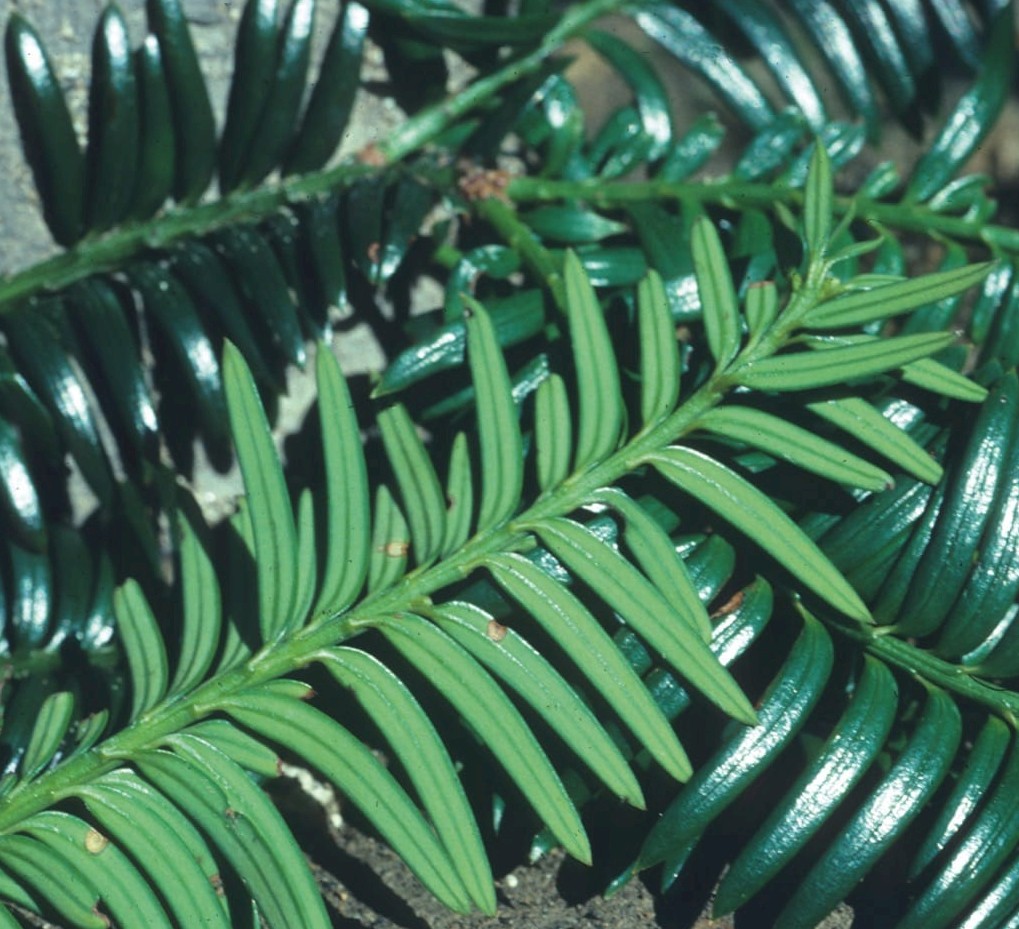Taxus sumatrana
Sponsor
Kindly sponsored by
This genus has been sponsored and new text is being prepared.
Credits
Article from New Trees by John Grimshaw & Ross Bayton
Recommended citation
'Taxus sumatrana' from the website Trees and Shrubs Online (treesandshrubsonline.
Distribution INDONESIA: Sulawesi (Celebes), Sumatra; PHILIPPINES. Habitat Humid, subtropical forest and montane forest, between 1400 and 2300 m asl. USDA Hardiness Zone 8. Conservation status Lower Risk (IUCN), but threatened by forest clearance (Nicholson 1998); included on CITES Appendix 2. Cross-reference B569 (but this refers to mixed material of mainland origin). Illustration NT842.
The name Taxus sumatrana has at times been very widely applied to Asian yews – for example by de Laubenfels (1988), who included under it all but T. cuspidata – but Farjon (2001) used it only to refer to yews occurring in Indonesia and the Philippines. The recent studies on the T. wallichiana group (see below) included a very small sample of Philippine, Sulawesi and Taiwanese material; although this did fit within the wider picture of T. wallichiana, the sample was insufficient to allow firm conclusions (Möller et al. 2007), and we follow Farjon’s geographical delimitation here.
Material collected by Nicholson and Shemluck from the Philippine islands of Luzon and Mindanao, and therefore permissibly identified as T. sumatrana, is in cultivation outdoors in areas of the United States with mild climates, and elsewhere under glass (for example, at the Royal Botanic Garden Edinburgh). The 25 clones that have been propagated include material from Mount Pulog, Luzon (labelled by the population identifiers Pulog 1 to Pulog 7) and from Mount Apo on Mindanao (Apo 8 to Apo 25) (R. Nicholson, pers. comm. 2008). One of their collections from Mindanao (Apo 14) is grown outdoors at Quarryhill, where it was looking somewhat sunburnt when seen in 2004. Nicholson (1998) has pointed out that yews are shade-dependent for germination, raising concerns that populations are unlikely to survive where even selective felling opens up the canopy.
There are many other stocks of yews in cultivation under this name, dating back to collections made by Wilson (for example, W 4053) in Sichuan. Others include Town-send & Bridger’s (HONX 68) from Honshu (currently growing at Kew and elsewhere), and material sent from Wishan in Taiwan by the Forest Research Institute of Taiwan (Kew). No doubt there are many more – including stock labelled T. celebica. Plants offered for sale as T. sumatrana by Heronswood Nursery c.1999–2000 were raised by Dan Hinkley (pers. comm. 2008) from seed from a Japanese Index Seminum. None of the above should be considered T. sumatrana in the strict geographical circumscription given by Farjon, however; they are most likely to be members of the T. wallichiana complex.

